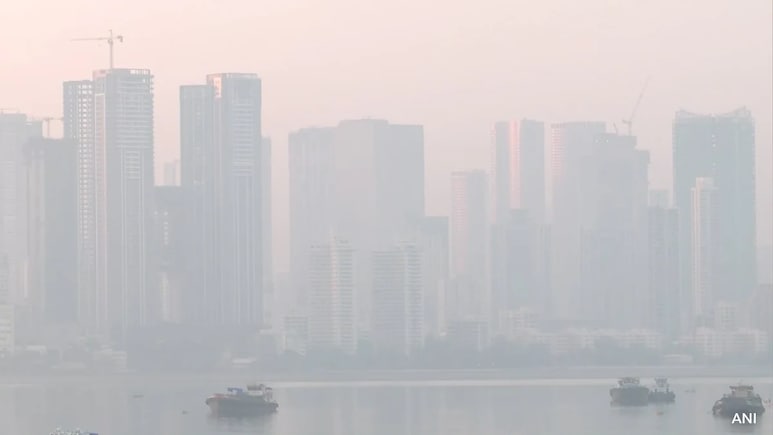
Pollution level in Mumbai has spiked sharply, making October the most polluted month of the year so far, according to an analysis done by an independent research organisation.
The analysis shared by the Centre for Research on Energy and Clean Air (CREA) on Wednesday highlighted that between October 18 and 22, as many as 19 monitoring stations in Mumbai recorded their highest daily average PM2.5 levels, while seven registered their peak PM10 levels since January.
CREA made this analysis on the basis of data compiled from the Central Pollution Control Board's (CPCB) monitoring stations.
"October 2025 stands out as Mumbai's most polluted month so far this year, with air quality levels peaking across several parts of the city. Between October 18 and 22, as many as 19 stations recorded their highest daily PM2.5 levels and seven stations their peak PM10 levels since January," said Manoj Kumar, an analyst at the research organisation.
With the festive season in full swing, the financial capital's air quality has deteriorated further, exposing residents to unhealthy pollution levels, and while celebrations draw more people outdoors, the air remains unsafe to breathe, he noted.
"It's crucial for authorities to address not just seasonal pollution spikes but also everyday sources like construction dust, traffic emissions, and other contributors that steadily degrade air quality. Protecting public health must remain at the heart of the city's response," maintained Kumar.
In the metropolis, air quality is tracked by Continuous Ambient Air Quality Monitoring Stations (CAAQMS) operated by the Maharashtra Pollution Control Board (MPCB), the Indian Institute of Tropical Meteorology (IITM), and the Brihanmumbai Municipal Corporation (BMC).
As per CPCB standards, the permissible limit for PM10 is 100 micrograms per cubic metre for a 24-hour average, while PM2.5 should not exceed 60 micrograms per cubic metre.
Fine particles like PM2.5 and PM10 -- primarily originating from vehicular emissions, construction activities, and open burning -- remain the main pollutants affecting Mumbai's air, a CREA statement said.
Persistently high concentrations of PM10 and PM2.5 pose serious health threats, especially to vulnerable populations like children, the elderly, and those with pre-existing medical conditions. Long-term exposure increases the risk of respiratory illnesses, cardiovascular diseases, and cancer, the statement cautioned.
Particulate matter (PM) levels in the air, measured by their size, are used to indicate air quality. The term PM generally refers to a combination of solid particles and liquid droplets found in the air.
(Except for the headline, this story has not been edited by NDTV staff and is published from a syndicated feed.)
Track Latest News Live on NDTV.com and get news updates from India and around the world

